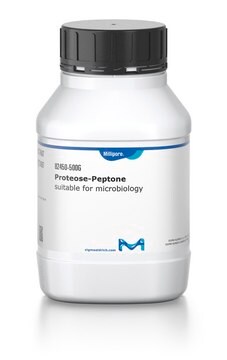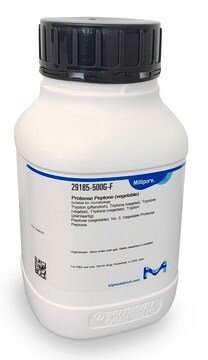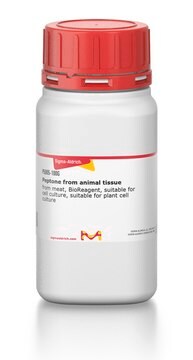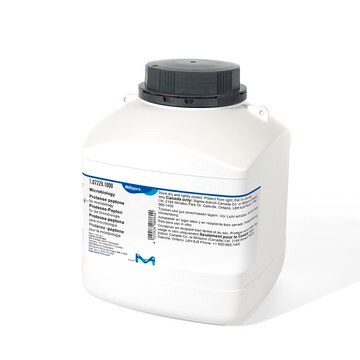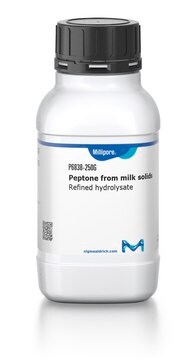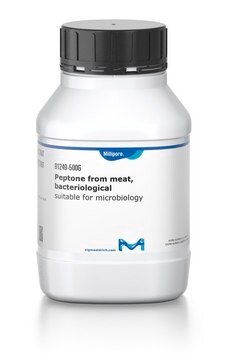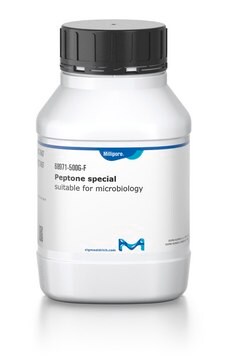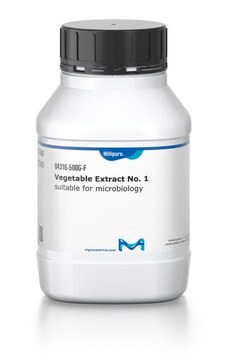P0431
Proteose Peptone
Enzymatic hydrolysate
Synonym(s):
Peptone from animal tissue
About This Item
Recommended Products
biological source
bovine
plant
Quality Level
form
powder
nitrogen analysis
10.0-15.5% total
loss
≤5% loss on drying
pH
6.6-7.6
application(s)
food and beverages
microbiology
InChI
1S/C13H24O4/c1-6-13(3,7-2)9-8-10(11(14)16-4)12(15)17-5/h10H,6-9H2,1-5H3
InChI key
AIUDWMLXCFRVDR-UHFFFAOYSA-N
Looking for similar products? Visit Product Comparison Guide
Related Categories
Application
Storage Class Code
11 - Combustible Solids
WGK
WGK 3
Flash Point(F)
Not applicable
Flash Point(C)
Not applicable
Personal Protective Equipment
Regulatory Listings
Regulatory Listings are mainly provided for chemical products. Only limited information can be provided here for non-chemical products. No entry means none of the components are listed. It is the user’s obligation to ensure the safe and legal use of the product.
JAN Code
P0431-VAR:
P0431-BULK:
P0431-250G:
P0431-1KG:
Choose from one of the most recent versions:
Already Own This Product?
Find documentation for the products that you have recently purchased in the Document Library.
Customers Also Viewed
Our team of scientists has experience in all areas of research including Life Science, Material Science, Chemical Synthesis, Chromatography, Analytical and many others.
Contact Technical Service